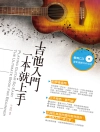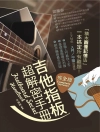The anthology La donna è mobile is the follow-up volume to the best-seller Eine kleine Nachtmusik with masterpieces of classical music (ED 20764). The latest volume in the Pianissimo series contains 50 of the best known opera melodies and ‘favourites of the public’ by Mozart, Rossini, Puccini, Verdi and others. The arrangements by Hans-Günter Heumann are easy to play, yet remain as close to the original as possible. A treasure trove for music lessons and playing for pleasure!
表中的内容
Georg Friedrich Händel (1685–1759): Lascia ch’io pianga aus Rinaldo – Christoph Willibald Gluck (1714–1787): Che farò senza Euridice from Orpheus and Eurydice – Wolfgang Amadeus Mozart (1756–1791): O, wie will ich triumphieren from The Abduction from the Seraglio – Wolfgang Amadeus Mozart (1756–1791): Se vuol ballare, signor Contino from The Marriage of Figaro – Wolfgang Amadeus Mozart (1756–1791): Non più andrai, farfallone amoroso from The Marriage of Figaro – Wolfgang Amadeus Mozart (1756–1791): Voi, che sapete from The Marriage of Figaro – Wolfgang Amadeus Mozart (1756–1791): Là ci darem la mano from Don Giovanni – Wolfgang Amadeus Mozart (1756–1791): Der Vogelfänger bin ich ja from The Magic Flute – Wolfgang Amadeus Mozart (1756–1791): Der Hölle Rache kocht in meinem Herzen from The Magic Flute – Ludwig van Beethoven (1770–1827): O welche Lust from Fidelio – Carl Maria von Weber (1786–1826): Durch die Wälder, durch die Auen from The Marksman – Carl Maria von Weber (1786–1826): Was gleicht wohl auf Erden from The Marksman – Gioacchino Rossini (1792–1868): Largo al factotum from The Barber of Seville – Gioacchino Rossini (1792–1868): Overture from William Tell – Gaetano Donizetti (1797–1848): Una furtiva lagrima from The Elixir of Love – Vincenzo Bellini (1801–1835): Casta Diva from Norma – Albert Lortzing (1801–1851): Clog Dance from Tsar and Carpenter – Richard Wagner (1813–1883): Steuermann, lass die Wacht! from The Flying Dutchman – Richard Wagner (1813–1883): Song to the Evening Star from Tannhäuser – Richard Wagner (1813–1883): Bridal Chorus from Lohengrin – Richard Wagner (1813–1883): Morgenlich leuchtend im rosigen Schein from The Master-Singers of Nuremberg – Richard Wagner (1813–1883): Ride of the Valkyries from The Valkyrie – Giuseppe Verdi (1813–1901): Va, pensiero, sull’ali dorate from Nabucco – Giuseppe Verdi (1813–1901): La donna è mobile from Rigoletto – Giuseppe Verdi (1813–1901): Di quella pira from The Troubadour – Giuseppe Verdi (1813–1901): Libiamo ne’ lieti calici from La Traviata – Giuseppe Verdi (1813–1901): Noi siamo zingarelle from La Traviata – Giuseppe Verdi (1813–1901): Triumphal March from Aida – Giuseppe Verdi (1813–1901): Celeste Aida from Aida – Charles Gounod (1818–1893): Waltz from Faust / Margarethe – Jacques Offenbach (1819–1880): Barcarole from The Tales of Hoffmann – Alexander Borodin (1833–1887): Polovtsian Dance from Prince Igor – Amilcare Ponchielli (1834–1886): Dance of the Hours from La Gioconda – Camille Saint-Saëns (1835–1921): Mon cœur s’ouvre à ta voix from Samson and Delilah – Georges Bizet (1838–1875): Habanera from Carmen – Georges Bizet (1838–1875): Toréador, en garde from Carmen – Jules Massenet (1842–1912): Aragonaise from Le Cid – Jules Massenet (1842–1912): Méditation from Thaïs – Nikolai Rimsky-Korsakov (1844–1908): Flight of the Bumblebee from The Tale of Tsar Saltan – Alfredo Catalani (1854–1893): Ebben? Ne andrò lontana from La Wally – Engelbert Humperdinck (1854–1921): Brüderchen, komm tanz mit mir from Hansel and Gretel – Abends, will ich schlafen gehn from Hansel and Gretel – Ruggiero Leoncavallo (1857–1919): Vesti la giubba from The Clowns – Giacomo Puccini (1858–1924): In quelle trine morbide from Manon Lescaut – Giacomo Puccini (1858–1924): Quando m’en vo’ from La Bohème – Giacomo Puccini (1858–1924): Che gelida manina from La Bohème – Giacomo Puccini (1858–1924): E lucevan le stelle from Tosca – Giacomo Puccini (1858–1924): Vissi d’arte, vissi d’amore from Tosca – Giacomo Puccini (1858–1924): Un bel di, vedremo from Madame Butterfly – Pietro Mascagni (1863-1945): Intermezzo sinfonico from Cavalleria rusticana
关于作者
Hans-Günter Heumann (*1955) first studied at the Hanover Musikhochschule (piano with Hans Priegnitz and Konrad Meister, composition with Einar Steen-Noekleberg, as well as music education and musicology) and then later studied composition in New York and New Orleans. As a piano teacher and composer, he has primarily focused on the publication of educational piano literature. His principal concern was to teach music in a comprehensible way and make it accessible to a large audience.
He has composed and arranged piano music in all musical genres for beginners through to advanced musicians; developed piano methods for students of all ages; and published books and sheet music editions which serve to introduce certain composers and their works using text and pictures. The large number of internationally successful publications from Schott Music reflects the approval and popularity of his work.
Drawing from his many years teaching children, young people and adults, in 1995-96 he wrote two of the most important German piano methods which were extremely well received by adult re-learners, piano teachers and pupils alike.
His Classical Piano Method as well as the multi-media piano method for children, Piano Junior, have become established publications in the English-speaking market. His best-selling German-language edition Klavierspielen – mein schönstes Hobby is also used with great success in French piano lessons under the title À vous de jouer! PIANO. His Piano Kids method and the German version of Piano Junior are also very popular in German-language lessons.
In addition to his educational piano literature, the ‘Heumann programme’ Easy Piano Music includes very easy arrangements of jazz, rock, pop, and folk music, as well as ‘composer themed editions’ with easy arrangements and original works of easy to medium difficulty. They are suitable for young and adult beginners as well as for advanced players and music lovers. These include, for example, the Get to Know Composers and Get to Know Classical Masterpieces series. Containing background information and details about the composers’ lives and a list of their most important works, including contemporary colour illustrations, they provide easy access to the respective composer and whet the musician’s appetite to expand their piano playing repertoire. The volume Piano Classics – The most beautiful piano pieces from Bach to Satie – contains a special selection of works for lovers of piano music.
In 2011 he published Live Your Dream, a book with his own compositions which were inspired by spiritual aphorisms. He also composed pop melodies for beginner’s lessons which are included in editions like Fantasy Piano, Mystery Piano or Piano Playground.
Hans-Günter Heumann now works as a freelance composer and author and lives in South Germany.












